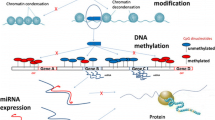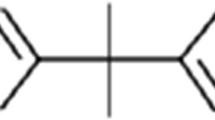Abstract
Intensive usage of electronic appliances containing lithium batteries causes an accumulation of e-trash. Environmental exposure to lithium batteries contaminates ecosystems. In air and water, the batteries form lithium hydroxide (LiOH) on their surfaces. LiOH enters the aquatic environment and contaminates the aquatic ecosystem by being absorbed into biological organisms. In this study, in order to identify meaningful potential biomarkers that appear in response to lithium, we measured significantly up- and down-regulated genes after LiOH exposure by conducting a microarray. In addition, we explored the functions of differentially expressed daphnia genes, and we conducted a comparative analysis in other species, Daphnia spp. to humans, then analyzed the signaling pathways using the human gene set derived from daphnia sequences that are differentially expressed in response to LiOH using the NCBI-BLAST tool and Pathway studio. As a result, we identified signaling pathways and suggested several potential biomarkers that are up- or down-regulated in response to lithium. This study may contribute to the development of a biomonitoring system which can detect the ecotoxicity of lithium. Furthermore, lithium toxicity in humans can be predicted, so the study may also provide potential biomarkers of lithium exposure in humans.
Similar content being viewed by others
References
Kszos, L. A. & Stewart, A. J. Review of lithium in the aquatic environment: distribution in the United States, toxicity and case example of groundwater contamination. Ecotoxicology 12:439–447 (2003).
Moshtev, R. et al. Synthesis, XRD characterization and electrochemical performance of overlithiated LiNiO2, J Power Sources 81–82:434 (1999).
Sun, H.J. et al. Characterization of Atmospheric H2-Plasma-Treated LiNi1/3Co1/3Mn1/3O2 as Cathode Materials in Lithium Rechargeable Batteries. Trans. of the Korean Hydrogen and New Energy Society 24:160–171 (2013).
Anderson, B. The Toxicity Thresholds of Various Sodium Salts Determined by the Use of Daphnia magna. Sewage Works Journal 18:82–87 (1946).
Emery, R., Klopfer, D. C. & Skalski, J. R. Incipient toxicity of lithium to freshwater organisms representing a salmonid habitat. PNL-3640,UC-11 364 (1981).
Hamilton, S. J. Hazard assessment of inorganic to three endangered fish in the Green River, Utah. Ecotoxicol Environ Safety 30:134–142 (1995).
Long, K. E., Brown, R. P. Jr & Woodburn, K. B. Lithium chloride: a flow-through embryo-larval toxicity test with the fathead minnow, Pimephales promelas Rafinesque. Bull Environ Contam Toxicol 60:312–317 (1998).
Dwyer, F. J., Burch, S. A., Ingersoll, C. G. & Hunn, J. B. Toxicity of trace element and salinity mixtures to striped bass (Morone saxatilis) and Daphnia magna. Environ Toxicol Chem 11:513–520 (2011).
Schindler, D. W. Detecting ecosystem responses to anthropogenic stress. Can J Fish Aquat Sci 44:6–25 (1987).
Sarma, S. S. S. & Nandini, S. Review of Recent Ecotoxicological Studies on Cladocerans. J Environ Sci Health B 41:1417–1430 (2006).
Connon, R. et al. Linking molecular and population stress responses in Daphnia magna exposed to cadmium. Environ Sci Technol 42:2181–2188 (2008).
Tatarazako, N., Oda, S., Watanabe, H., Morita, M. & Iguchi, T. Juvenile hormone agonists affect the occurrence of male Daphnia. Chemosphere 53:827–833 (2003).
Klaper, R. et al. Toxicity biomarker expression in daphnids exposed to manufactured nanoparticles: Changes in toxicity with functionalization. Environ Pollut 157:1152–1156 (2009).
Kim, H. J., Koedrith, P. & Seo, Y. R. Ecotoxicogenomic Approaches for Understanding Molecular Mechanisms of Environmental Chemical Toxicity Using Aquatic Invertebrate, Daphnia Model Organism. Int J Mol Sci 16:12261–12287 (2015).
Stranger, B. E. & Dermitzakis, E. T. The genetics of regulatory variation in the human genome. Human Genomics 2:126–131 (2005).
Shaw, J. R. et al. Gene response profiles for Daphnia pulex exposed to the environmental stressor cadmium reveals novel crustacean metallothioneins. BMC Genomics 8:477 (2007).
Mochida, K. & Shinozaki, K. Advances in Omics and Bioinformatics Tools for Systems Analyses of Plant Functions. Plant Cell Physiol 52:2017–2038 (2011).
Timmer, R. T. & Sands, J. M. Lithium Intoxication. J Am Soc Nephrol 10:666–674 (1999).
Salocks, C. & Kaley, K. B. Lithium. In: Kaley KB (ed): Technical Support Document: Toxicology Clandestine Drug Labs: Methamphetamine. 1:10 (2003).
Bagetta, G. et al. Lithium and tacrine increase the expression of nitric oxide synthase mRNA in the hippocampus of rat. Biochem Biophys Res Commun 197:1132–1139 (1993).
Kjølholt, J., Stuer-Lauridsen, F., Skibsted, M., Havelund, S. A. The Elements in the Second Rank - an Environmental Problem Now or in the Future? Environmental Project No. 770. Miljøprojekt. Danish EPA. Danish Ministry of the Environment (2003).
Andersen, S. O., Højrup, P. & Roepstorff, P. Insect cuticular proteins. Insect Biochem Mol Biol 25:153–176 (1995).
Stankiewicz, B. A. et al. Biodegradation of the chitinprotein complex in crustacean cuticle. Organic Geochemistry 28:67–76 (1998).
Welinder, B. S. The crustacean cuticle - I. Studies on the composition of the cuticle. Comp Biochem Physiol Part A Physiology 47:779–787 (1974).
Merzendorfer, H. & Zimoch, L. Chitin metabolism in insect: structure, function and regulation of chitin synthases and chitinase. J Exp Biol 206:4393–4412 (2003).
Havemann, J. et al. Cuticle differentiation in the embryo of the amphipod crustacean Parhyale hawaiensis. Cell Tissue Res 332:359–370 (2008).
Jeong, S. W. et al. Genomic expression responses toward bisphenol - A toxicity in Daphnia magna in terms of reproductive activity. Mol Cell Tox 9:149–158 (2013).
Locke, M. The Wigglesworth lecture: Insects for studying fundamental problems in biology. J Insect Physiol 47:495–507 (2001).
Otte, K. A., Fröhlich, T., Arnold, G. J. & Laforsch, C. Proteomic analysis of Daphnia magna hints at molecular pathways involved in defensive plastic responses. BMC Genomics 24:306 (2014).
Allagui, M. S., Vincent, C., El Feki, A., Gaubin, Y. & Croute, F. Lithium toxicity and expression of stress-related genes or proteins in A549 cells. Biochim Biophys Acta 1773:1107–1115 (2007).
Kregel, K. C. Heat shock proteins: modifying factors in physiological stress responses and acquired thermotolerance. J Appl Physiol 92:2177–2186 (2002).
Schreier, T., Degen, E. & Baschong, W. Fibroblast migration and proliferation during in vitro wound healing. A quantitative comparison between various growth factors and a low molecular weight blood dialysate used in the clinic to normalize impaired wound healing. Res Exp Med (Berl) 193:195–205 (1993).
Beyaert, R. et al. Lithium chloride potentiates tumor necrosis factor-mediated cytotoxicity in vitro and in vivo. Proc Natl Acad Sci USA 86:9494–9498 (1989).
Beyaert, R. et al. Enhancement of tumor necrosis factor cytotoxicity by lithium chloride is associated with increased inositol phosphate accumulation. J Immunol 151:291–300 (1993).
Yoshioka, W. et al. Severe toxicity and cyclooxygenase (COX)-2 mRNA increase by lithium in the neonatal mouse kidney. J Toxicol Sci 34:519–525 (2009).
Zaidan, M. et al. Increased risk of solid renal tumors in lithium-treated patients. Kidney Int 86:184–190 (2014).
Engel, T. et al. Lithium, a potential protective drug in Alzheimer’s disease. Neurodegener Dis 5:247–249 (2008).
Nunes, M. A., Viel, T. A. & Buck, H. S. Microdose lithium treatment stabilized cognitive impairment in patients with Alzheimer’s disease. Curr Alzheimer Res 10:104–107 (2013).
Ehlers, M. R. W. & Riordan, J. F. Angiotensin-converting enzyme - new concepts concerning its biological role. Biochemistry 28:5311–5318 (1989).
Erdos, E. G. Angiotensin-I converting enzyme and the changes in our concepts through the years - Lewis K. Dahl Memorial Lecture. Hypertension 16:363–370 (1990).
Isaac, R. E. et al. Toward a role for angiotensin-converting enzyme in insects. Ann NY Acad Sci 839:288–292 (1998).
Tatei, K., Cai, H., Ip, Y. T. & Levine, M. Race: a Drosophila homologue of the angiotensin converting enzyme. Mech Dev 51:157–168 (1995).
Kato, Y., Kobayashi, K., Watanabe, H. & Iguchi, T. Environmental sex determination in the branchiopod crustacean Daphnia magna: deep conservation of a Doublesex gene in the sex-determining pathway. PLoS Genet 7(3), Epub (2011).
Bruns, G. A. & Gerald, P. S. Human glyceraldehyde-3-phosphate dehydrogenase in man - rodent somatic cell hybrids. Science 192:54–56 (1976).
Sirover, M. A. New insights into an old protein: The functional diversity of mammalian glyceraldehyde-3-phosphate dehydrogenase. Biochim Biophys Acta 1432:159–184 (1999).
Nicholls, C., Li, H. & Liu, J. P. GAPDH: a common enzyme with uncommon functions. Clin Exp Pharmacol Physiol 39:674–679 (2012).
Colell, A., Green, D. R. & Ricci, J. E. Novel roles for GAPDH in cell death and carcinogenesis. Cell Death Differ 16:1573–1581 (2009).
Guo, C., Liu, S. & Sun, M. Z. Novel insight into the role of GAPDH playing in tumor. Clin Transl Oncol 15:167–172 (2013).
Altenberg, B. & Greulich, K. O. Genes of glycolysis are ubiquitously overexpressed in 24 cancer classes. Genomics 84:1014–1020 (2004).
Author information
Authors and Affiliations
Corresponding authors
Rights and permissions
About this article
Cite this article
Kim, H.J., Yang, J.H., Kim, H.S. et al. Exploring potential biomarker responses to lithium in Daphnia magna from the perspectives of function and signaling networks. Mol. Cell. Toxicol. 13, 83–94 (2017). https://doi.org/10.1007/s13273-017-0009-6
Received:
Accepted:
Published:
Issue Date:
DOI: https://doi.org/10.1007/s13273-017-0009-6




